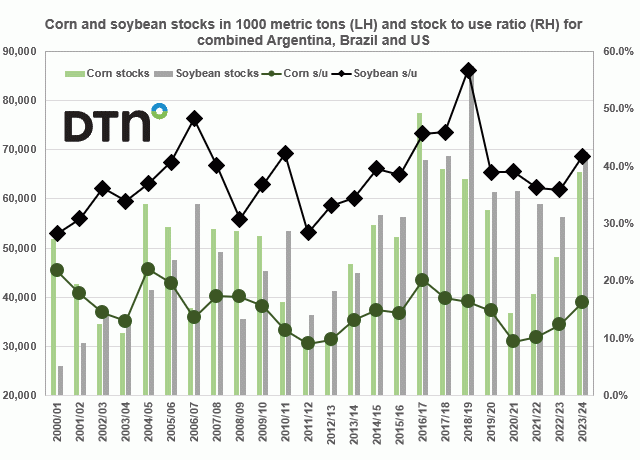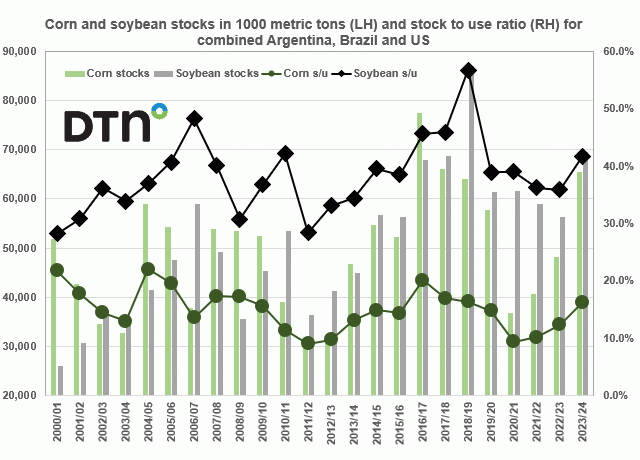Fundamentally Speaking
Changing Corn Conditions
Perhaps it was a bit surprising that the latest weekly corn crop ratings increased by 1% to 59% good or excellent, though what really got traders attention was much of the gain was due to a huge 12% increase in the top two ratings in the state of Illinois.
All year we have witnessed wide week to week swings in Illinois crop conditions for both corn and soybeans, but the latest jump comes at a time when early corn yield reports from Illinois have been termed disappointing due to a variety of corn diseases, including tar spot and lighter than normal test weights, perhaps due to the rapid dry-down seen in a number of areas in that state.
At this point with the crop close to half mature we probably won't get many more condition report readings so this graph shows the corn crop condition change from week 23 (around the middle of June) to week 37 (the middle of September) on the left-hand axis for the top 18 corn producing states using our usual system (where we weight the crop based on the percent in each category and assign that category a factor of 2 for very poor, 4 for poor, 6 for fair, 8 for good, and 10 for excellent and then sum the results).
The right-hand axis reports the percent change in crop ratings from week 23 to week 37 and we also show in the yellow circles the standard deviation of the 14-week change for each of the 18 states.
P[L1] D[0x0] M[300x250] OOP[F] ADUNIT[] T[]
The standard deviation is a measure of the amount of variation or dispersion of a set of values as a low number indicates that the values tend to be close to the mean while a high standard deviation indicates that the values are spread out over a wider range.
Hence those states that have large week to week variations in crop conditions will have a higher standard deviation than those that do not.
It is more important where we end than where we began, but back in middle of June large corn producing states in the Plains such as CO, NE and TX had some of highest crop ratings along with KY and TN with ratings all over the 790 level.
As summer progressed, hot and dry conditions resulted in large downgrades in the Plains states with CO now at 628, off 21.4% the largest negative change for any of the 18 states, NE now at 746 and down 7.2% and TX now at 734 and down 9.8% over the past three months.
KY and TN however were able to maintain their high ratings all year with those two along with NC and PA having the best week 37 ratings attesting to the generally good conditions seen in the eastern Corn Belt this season.
Such the case also in MI and WI, both states that started out rather dry but good rains over the summer resulted in Michigan seeing the largest improvement in crop ratings from week 23 to week 37 at 9.7% and WI second at 4.8%.
Note that MN, ND, and SD started the year with rather low ratings and given the drought seen all season crop conditions just kept deteriorating.
Finally, though IL did see a fair amount of week to week variability in their crop ratings, their standard deviation figure of 18.4 is well below CO, MN, ND, and SD along with NE and TX that saw even higher levels of variability in their crop ratings over the year.
(c) Copyright 2021 DTN, LLC. All rights reserved.






Comments
To comment, please Log In or Join our Community .